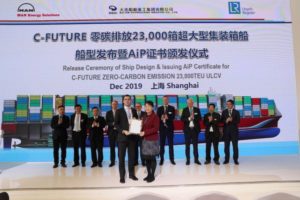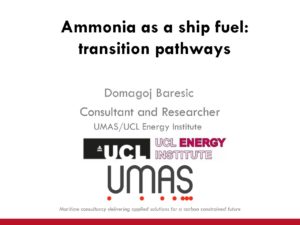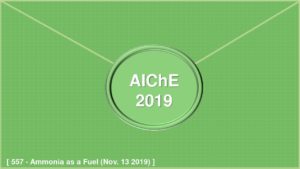Three separate projects to design a range of ammonia-fueled vessels were announced last week at a shipping industry conference in China. Lloyd's Register has granted Approval in Principle (AiP) for the design of a 180,000 ton bulk carrier. ABS announced a project to "produce designs for an ammonia-fueled Chittagongmax container carrier of 2700 TEU capacity." And Lloyd's Register also announced a project for "an ammonia-fuelled 23,000 TEU Ultra-Large Container Ship (ULCS) concept design." All three projects are working with the two-stroke ammonia engine developed by MAN Energy Solutions, and all are led by major shipbuilders in China.
Maritime Fuel
Fuel Transition Scenarios for the Maritime Industry up to 2050
Technical & Economic Study for Commercial Ships with HFO, LNG and NH3 As Fuel
Ammonia – Could it replace HFO/LSFO?
Safe and Effective Application of Ammonia As a Marine Fuel
Maritime fuel mix could be 25% ammonia by 2050
DNV GL published its annual Energy Transition Outlook last week, which includes a dedicated analysis of the shipping industry in its Maritime Forecast to 2050. According to DNV GL, the IMO's 2050 emission reduction targets can be met through innovative ship design, using ammonia as an alternative fuel. Widespread commercial adoption of ammonia fuel would begin in 2037; ammonia would the dominant fuel choice for new builds by 2042; and ammonia would represent 25% of the maritime fuel mix by 2050. This represents new demand for roughly 120 million tons per year of green ammonia by 2050. This outcome greatly depends on how maritime regulations are developed in the coming years, but it would see ammonia-fueled ships represent almost 100% of new vessels (by fuel consumption) from 2044 onwards.
Ammonia = Hydrogen 2.0 Conference: panel discussion recap
The Ammonia Energy Association Australia’s Ammonia = Hydrogen 2.0 Conference took place on 22-23 August 2019 in Melbourne, Australia. It attracted 115 attendees from industry, government, and research institutions. This is the first of two articles about the event; this article recaps the interactive panel sessions and the second article will highlight selected presentations. The panel discussions were placed at the end of the program so that important themes from the presentations could be highlighted and integrated. These themes included: 1) Building an energy export industry using green ammonia; 2) Green ammonia as a maritime bunker fuel; and 3) Green ammonia as grid scale energy storage – a battery to the nation.
Alternative low carbon energy for maritime application









